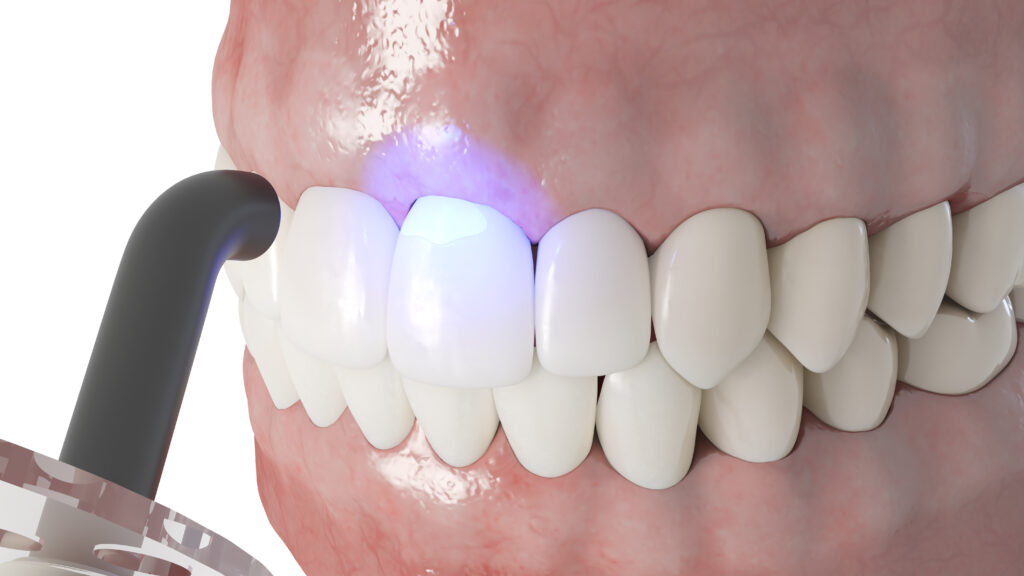Is Dental Bonding a Suitable Solution for Fixing Chipped or Cracked Teeth?
Repairing chipped or cracked teeth can seem daunting, but a simple solution is within reach with dental bonding. At Cassell Dentistry in Mission Valley, CA, our team is dedicated to providing high-quality dental bonding.
Using state-of-the-art technology and modern materials, we can help you restore your smile and give you the confidence to showcase your pearly whites again. Whether you need a minor touch-up or a complete smile makeover, you can trust our experience and personalized care.
What is Dental Bonding in Mission Valley?
Dental bonding is a cosmetic dental procedure that involves the precise application of a tooth-colored composite resin material to the surface of your teeth. This treatment can effectively change your teeth’s shape, size, or color, making it an ideal solution for repairing chipped, cracked, or otherwise damaged teeth.
By carefully sculpting and bonding the resin to your teeth, our dentist can enhance your smile’s looks and restore your teeth’s natural appearance. With dental bonding, you can achieve a beautiful smile that boosts your confidence and leaves you feeling great.
Benefits of Dental Bonding
Dental bonding comes with numerous benefits:
Versatility: Dental bonding is a versatile dental treatment that can quickly repair a variety of dental issues. It commonly addresses problems such as chips, cracks, discoloration, and misshapen teeth. Dental bonding allows our patients to achieve a restored and great-looking smile.
Aesthetic Appeal: One of the key advantages of dental bonding is its ability to blend with your natural teeth. The composite resin used in the bonding process can be color-matched to your existing teeth to ensure a harmonious and natural-looking result. This aesthetic appeal mainly benefits those who desire a cosmetic dental solution that enhances their smile’s overall appearance.
Cost-Effective: Dental bonding is also a cost-effective option in addition to its versatility and aesthetic benefits. Dental bonding is often more affordable than other treatments, such as porcelain veneers or dental crowns.
Procedure and Process of Dental Bonding
The process of dental bonding is a straightforward procedure that is usually completed in just one visit to your dentist. It begins with the careful selection of a shade of composite resin that perfectly matches the color of your natural teeth.
Next, our dentist will gently roughen the surface of the tooth and apply a conditioning liquid. This step helps to create a strong bond between the tooth and the composite resin and ensures its longevity.
Once the tooth is prepped, the composite resin is applied to the tooth and molded and shaped to achieve a natural-looking tooth. Our dentist then uses specialized tools and techniques to smooth the resin to ensure a comfortable fit.
A special light is used to harden the composite resin to complete the bonding process. This light activates the bonding agent in the resin, allowing it to adhere to the tooth firmly. Once the resin is set, our dentist will carefully trim and shape the bonded tooth to achieve optimal looks and functionality.
Finally, the bonded tooth undergoes polishing to give it a smooth finish. This enhances its appearance, helps prevent staining, and maintains its longevity.
Maintaining Dental Bonding: Tips and Care
To maintain your dental bonding:
- Practice Good Oral Hygiene: Brush twice a day, floss daily, and have regular dental check-ups.
- Avoid Staining Foods and Drinks: Coffee, tea, and red wine can stain the resin used in dental bonding.
- Don’t Use Your Teeth as Tools: Opening packages or cutting tape with your teeth can chip the bonding material.
Common Misconceptions about Dental Bonding
Despite its benefits, there are some misconceptions about dental bonding:
Dental Bonding is Not Just for Cosmetic Purposes: Although commonly used for cosmetic enhancements, dental bonding is a versatile treatment that can also repair decayed teeth and safeguard exposed roots against gum recession.
Dental Bonding Doesn’t Last Forever But Can Be Long-lasting: With proper care and maintenance, dental bonding can last for several years. Regular oral hygiene practices, such as brushing, flossing, and routine dental check-ups, can help prolong the lifespan of dental bonding and maintain its best appearance.
Dental Bonding is Virtually Painless and Comfortable: One of the advantages of dental bonding is that it typically involves minimal to no discomfort during the procedure. The process is carefully performed by our dentist, who prioritizes patient comfort.
Contact Us Today
Cassell Dentistry is here to help you determine if dental bonding is the right solution for your chipped or cracked teeth. We invite you to experience dental bonding in Mission Valley by contacting us today.

